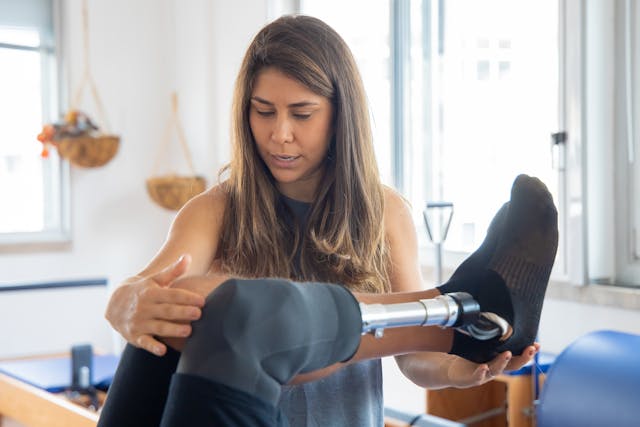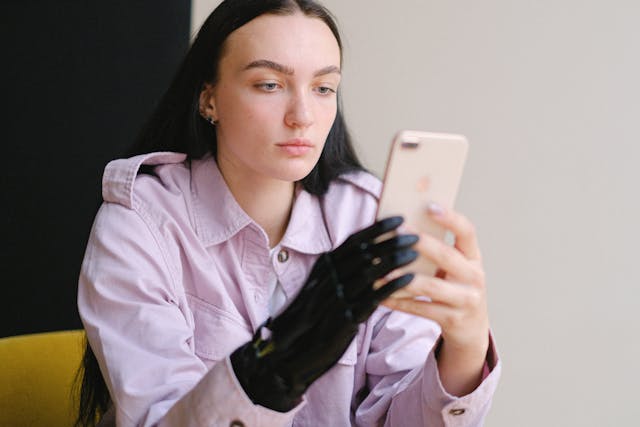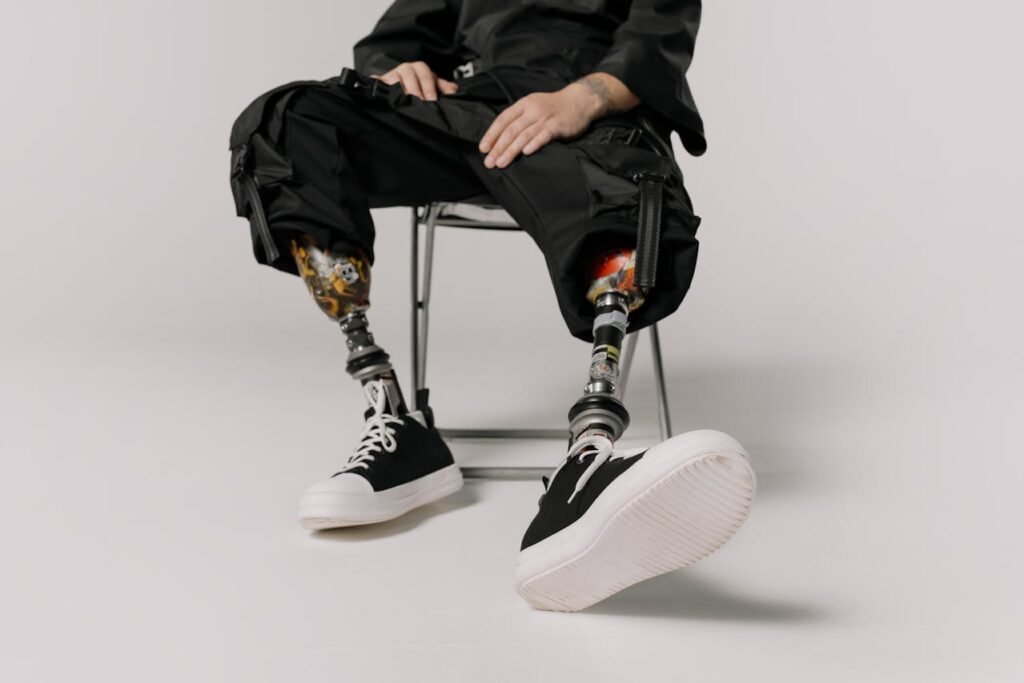When someone goes through an amputation, the journey to recovery often begins with questions—not just about movement, but also about cost. One of the growing trends in modern prosthetic care is immediate fit prosthetics. These are temporary prosthetics fitted shortly after surgery to help patients start moving again without waiting weeks or months. While the benefits are clear—faster healing, quicker return to walking, and early emotional recovery—the financial side can feel confusing.
At Robobionics, we work closely with individuals and families across India to help them understand what to expect when choosing immediate fit prosthetics. From first assessments to final fittings, we know that clarity around cost is just as important as comfort and quality. In this article, we break down the true cost of immediate fit prosthetics, where the money goes, and how to make smart choices that reduce expenses without compromising care.
Understanding Immediate Fit Prosthetics and Their Purpose
Before we talk numbers, it’s important to understand what an immediate fit prosthetic is and why it matters in your recovery. This type of prosthetic is typically fitted within a few days to a couple of weeks after surgery. It’s not permanent but plays a critical role during the early healing phase.
Why Early Fitting Helps Physically and Emotionally

After amputation, the body begins to heal and change quickly. Swelling goes down, muscles adjust, and the limb starts taking on a new shape. Instead of waiting for all of this to settle before using a prosthetic, immediate fitting allows a person to begin light movement early on. This gentle motion reduces stiffness, improves circulation, and helps preserve balance and muscle tone.
From an emotional perspective, being able to stand or take a few steps again—even with a temporary device—can change how someone feels about their recovery. It brings hope and gives structure to the healing journey. Many users say it helps them feel less dependent and more like themselves again.
At Robobionics, we believe that early mobility builds strength—not just in the body but in the mind. That’s why we guide users through the entire immediate fitting process with extra care and encouragement.
What’s Included in an Immediate Fit Prosthetic
An immediate prosthetic includes several parts: a temporary socket to fit over the healing limb, a basic pylon for support, and a simple prosthetic foot. For above-knee users, it may also include a basic mechanical knee joint. These components are designed to be light, safe, and adjustable. They’re not meant for full-day wear or active movement but are ideal for short walks, standing, and physical therapy.
It also includes fitting services, alignment checks, and routine adjustments. Because the limb is changing during this period, the prosthetic may need to be refitted or reshaped a few times. These are important steps to avoid pressure sores, poor balance, or discomfort.
Robobionics ensures that every user receives a full evaluation before fitting, and we offer frequent follow-ups to keep everything working smoothly. We make sure the device helps—not hinders—your healing process.
How Long You’ll Use the Immediate Prosthesis
Most users wear their immediate fit prosthetic for six to twelve weeks, depending on how fast the limb heals and stabilizes. During this time, your therapy team will assess your progress and determine when you’re ready for a definitive prosthetic. Because it’s only used for a short period, many people wonder if the cost is worth it.
The answer often lies in the benefits. Starting early helps users avoid long-term mobility issues, recover faster, and return to daily activities sooner. In many cases, it reduces the total time and cost of rehabilitation overall. Robobionics sees it as an investment in better recovery—not an extra cost.
Breaking Down the Costs of Immediate Fit Prosthetics

The cost of an immediate prosthetic varies depending on many factors, including the level of amputation, the type of components used, and the services provided by the clinic. Understanding where the money goes can help you plan ahead and avoid surprises.
Cost of Components and Materials
The physical parts of the prosthetic make up a large part of the cost. This includes the socket, foot, pylon, knee joint (if needed), liners, and suspension systems. In immediate fit prosthetics, these parts are usually made of lighter, more flexible materials that are safe for healing limbs but still durable enough for basic mobility.
Transtibial (below-knee) users typically have a lower component cost than transfemoral (above-knee) users, since there is no knee joint involved. The socket is also smaller, and the overall setup is simpler. For transfemoral users, the prosthetic must include a mechanical knee and a longer pylon, which adds to the cost.
At Robobionics, we use modular systems that allow easy adjustments and part replacements without rebuilding the entire prosthetic. This keeps material costs lower while still ensuring safety and comfort.
Cost of Fitting, Adjustments, and Follow-Up Services
The process of creating and fitting an immediate prosthetic doesn’t end with just the device. It includes the clinical time, labor, and expertise of your prosthetist. The initial fitting takes time and skill, especially since your limb will still be healing and changing shape. This means your prosthetic will need to be adjusted multiple times during the early weeks.
These follow-up services often include alignment corrections, socket reshaping, and pressure relief modifications. They may also include coordination with your physical therapist to make sure the prosthetic is supporting your rehab.
At Robobionics, we include these follow-ups in our care plan. We believe that every adjustment is part of your recovery, and we don’t charge separately for every small change. Our goal is to keep you comfortable and progressing at the right pace.
Other Related Costs to Keep in Mind
In addition to the device and fitting services, there are other costs to consider. These might include clinic visits, therapy sessions, limb liners, socks, or any diagnostic scans used to assess fit. You may also need transportation to appointments, medications for post-surgery care, or mobility aids like crutches or walkers.
While not all of these are directly tied to the prosthetic itself, they do affect your overall budget. That’s why Robobionics provides a full cost estimate up front—so you can plan clearly and avoid hidden expenses. Transparency is part of our promise.
How to Reduce Costs Without Sacrificing Quality

The cost of immediate fit prosthetics can feel like a lot—especially when it comes at a time of physical and emotional change. But there are ways to make it more affordable without compromising on safety, comfort, or care. With the right planning, the right support, and a trusted partner, you can manage your expenses and still get a high-quality solution that works for you.
Choose Modular and Adjustable Systems
One of the easiest ways to save money is by choosing a modular system for your immediate prosthetic. These systems are designed to be adjusted as your limb changes in the first few weeks. Instead of replacing the entire device, your prosthetist can make simple changes to the socket, liner, or alignment. This avoids repeated costs and makes the prosthetic more flexible during the healing process.
At Robobionics, we design our post-operative prosthetics to grow with you. Whether it’s adding liners for volume change or swapping out foot types for better comfort, our modular approach helps reduce waste, lower maintenance costs, and support a smoother recovery. It’s a smarter way to handle early-stage mobility.
Many users also find that investing in a quality adjustable socket during the immediate phase actually helps reduce the need for expensive rework later on. A better fit early on means fewer complications, better therapy results, and less need for urgent fixes.
Know What’s Included in the Price
Sometimes, the cost of an immediate prosthetic looks lower at first—but it doesn’t include follow-ups, adjustments, or support. That means you might end up paying more in the long run when you go back for help or need new parts. Understanding what’s included in the full cost can help you avoid these surprises.
At Robobionics, we provide complete care packages. These include fitting, follow-up sessions, alignment checks, socket adjustments, and coordination with your rehab team. There are no hidden fees. Our users know exactly what they’re paying for, and we explain every part of the plan before we begin.
This transparency helps families plan their budget and feel confident that they’re not going to be hit with unexpected costs later. It also builds trust, which is a key part of your recovery journey.
Consider Community Programs and CSR Initiatives

In India, there are several nonprofit and CSR-backed programs that help cover the cost of prosthetics for those in financial need. Some hospitals have partnerships with organizations that offer free or subsidized prosthetic care. Others may be covered under government health schemes or private social initiatives.
Robobionics actively works with CSR-driven partners and foundations to offer prosthetics to underserved communities. If you or someone you know needs assistance, we can help you connect with these programs. We’ve seen firsthand how these partnerships change lives—and we’re proud to be part of that effort.
Taking the time to ask about these options could reduce your cost significantly, and in some cases, the entire immediate fit prosthetic may be covered. It’s a path worth exploring, especially when resources are tight but the need is urgent.
Exploring Insurance, EMI Options, and Long-Term Cost Planning
Paying for an immediate fit prosthetic doesn’t always need to happen all at once. With better financial planning, insurance understanding, and flexible payment options, you can ease the financial pressure and focus more on recovery. Knowing your options early on can help you feel more in control—and that peace of mind is an important part of healing.
Understanding Insurance Coverage

In India, prosthetics are sometimes covered under private health insurance, employer health plans, or specialized schemes. However, coverage can vary a lot from one policy to another. Some insurance plans may cover only part of the prosthetic cost, while others may cover rehabilitation or therapy services instead. It’s important to check your policy documents carefully and speak directly to your insurance provider.
You should also ask specific questions—like whether the policy covers temporary or post-operative prosthetics, how much reimbursement is allowed, and whether there’s a list of approved clinics or brands. In some cases, prior approval or a doctor’s note may be needed before making a claim.
At Robobionics, we assist users by providing all the required documentation for insurance claims, including itemized invoices, medical letters, and cost breakups. We also help explain the process so you don’t feel lost. We believe access to the right prosthetic should never be blocked by confusion or delay.
Choosing EMI and Flexible Payment Options
Even if insurance doesn’t cover the full cost, there are other ways to manage the payment more comfortably. Many prosthetic providers, including Robobionics, now offer EMI (equated monthly installment) plans or staggered payment options. This allows you to break down the total cost into smaller parts over several months.
This is especially helpful during the post-operative phase when there may be other medical or family expenses happening at the same time. Instead of having to delay care until funds are ready, EMI options let you start recovery on time—while keeping your budget under control.
Robobionics offers zero-interest EMI plans through select financial partners. We discuss these options openly during your first consultation so you can decide what works best for your situation. Our goal is to make sure money doesn’t come in the way of mobility.
Planning for Long-Term Costs

It’s important to remember that your immediate prosthetic is just the first step. While it plays a crucial role in early recovery, you’ll eventually move on to a definitive prosthesis. That means thinking ahead and planning for future costs, including custom socket fittings, advanced components, and long-term rehabilitation.
By understanding the timeline of your recovery and how your prosthetic needs will evolve, you can budget more effectively. This might include setting aside savings monthly, reviewing health plan upgrades, or asking your provider about package discounts for long-term care.
At Robobionics, we guide users through this bigger picture. We not only help with your immediate fit prosthetic but also offer advice and support for your entire prosthetic journey. This helps you avoid unnecessary spending later and ensures that each step is a step forward.
Conclusion
The cost of an immediate fit prosthetic can feel like a lot to take in—especially at a time when your body, mind, and life are adjusting to major change. But when you break it down and understand what you’re paying for, where you can save, and how to plan ahead, it becomes easier to manage. This early device may be temporary, but its impact on your recovery is long-lasting.
From helping you stand again to building your emotional strength and physical confidence, an immediate prosthetic sets the tone for everything that follows. And while the cost includes components, fittings, and follow-ups, it’s also an investment in faster healing, better mobility, and greater independence.
At Robobionics, we believe everyone deserves access to high-quality prosthetics—regardless of budget. That’s why we’re committed to offering flexible payment options, transparent pricing, and guidance at every step. Whether you’re exploring EMI plans, insurance support, or CSR-backed funding, we’re here to help you move forward without unnecessary stress.
If you or someone you love is about to begin the recovery journey, reach out to Robobionics today.



